Recommendation 6 | Principle 4: Reusability
Reuse and share solutions and cooperate in the development of joint solutions when implementing European public service.
Solutions
| List of all available solutions that implement this recommendation |
|---|
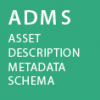
|
ADMS allows public officials working with metadata management to (re-)use or share semantic assets (metadata or reference data). |

|
This catalogue supports reusability of solutions for use in different phases of establishing and maintaining base registries. |
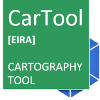
|
The CarTool can be used to support the development of ICT solutions as it allows its users to browse and analyse the already existing reusable solutions. |

|
The Big Data Test Infrastructure offers support and guidance on how Member States can use their big data to deliver better public services. Hence, by re-using this building block and running pilots and proofs of concept, Member States cooperate in development of new solutions. |

|
CIRCABC can be reused by public administrations as open source software (under EUPL license) and as a service over a web interface supporting collaboration, information and document exchange repository. |

|
Context Broker provides specifications, a core platform and reference implementation software which can be used by organisations. By reusing context broker, organisations can integrate data from multiple systems counting on increased analysis capacity. |

|
The CAV can be extend for desingning new data models according to stakeholders needs, while still ensuring the interoperability |

|
Using CPSV-AP to put descrive a Catalogue of Public Services contributes to its reuse. Additionally, under the action reusable software solutions for the creation, management and exchange of public service catalogues are developed. |

|
The CSSV can be extend for desingning new data models according to stakeholders needs, while still ensuring the interoperability |

|
Stakeholders can reuse the core vocabularies to design new data models that extend the Core Vocabularies, whist still ensuring a minimum core-sector interoperability. |

|
CISE specifications are developed together with key stakeholders using them. There is a dedicated Forum where key stakeholders at national level can share and reuse knowledge, lessons learnt and solutions. |
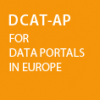
|
DCAT-AP is available for anyone's reuse as it is based on open specifications and it in itself facilitates the sharing of data. |

|
The eDelivery building block can be reused by any organisation in Europe to implement secure data exchange capabilities. |
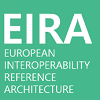
|
EIRA defines the most salient architectural building blocks (ABBs) needed to build interoperable eGovernment systems. This provides a framework allowing the description of solutions using well established controlled vocabulary. EIRA also facilitates the discovery and reusability of existing solutions. |

|
The library contains the specifications defining the interoperability requirements of the architectural building blocks (ABBs), which can be reused by public administrations. |
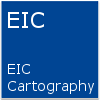
|
EIC provides a list of interoperability solutions, thus facilitating the reuse and sharing of such solutions. |

Location Framework Blueprint
|
Recommendations 11 of the EULF Blueprint encourages the reuse of relevant technical solutions where possible. Recommendation 8 of the EULF Blueprint recommends the use of an open and collaborative methodology for the design and improvement of location enabled public services. It recommends designing for reuse by future collaborators. Recommendation 19 of the EULF Blueprint on effective partnering includes partnership agreements for joint developments. |

|
The common ontology and the technical specifications for the representation of powers and mandates enables the sharing and reuse of data in this domain. |

|
Question C2 of the Service Consumption section of the IMAPS questionnaire assesses to which extent public administrations participate in the reuse and sharing of services and solutions. Furthermore, question B7 of Service Management section assesses the extent to which public administrations share and reuse documentation and software components. |
| Joinup facilitates the sharing and re-use of solutions for public administrations and provides the stakeholders with the means to collaborate. | |

|
By providing insights into the application of the sharing and reuse framework, the training modules help public administrations to better understand how to reuse and share solutions in practice. |

|
The LEOS software is developed by the EC, but the owners of the software are also integrating contributions from external sources (Member States or the European Council). |

|
By reusing the ESS Service Catalogue and more importantly the services contained in it, statisticians are contributing to the reuse and sharing of key solutions and information across borders. |

|
The interoperability test bed offers a platform for testing the interoperability conformance of newly developed solutions. In this regard, it assists in the creation of interoperable public services. |

|
The final version of the PMKI platform (access, knowledge base, knowledge model and the according services) will be available and could be connected to other EU services such as CEF.AT service for sharing and reusing multilingual resources. It can be used for better leveraging data to support customisation and adaptation. PMKI will provide a set of parallel data to build/reinforce machine translation systems, in particular domain specific systems focused on specific terminology and text types for their use case (public procurement terminology, medical terminology, etc.). |

|
The plan for Registry of Registries includes creation of reusable tools (Mapping Editor, Creator, Visual Editor, Data Validator, Data Harvester), hence allowing public officials to participate in the development and reuse of solutions. |

|
Public officials, upon request, can reuse nearly 100 TES solutions available in the TES Cartography. |

|
The Sharing and Reuse Framework is drawn together for the purpose of encouraging public administrations to share and reuse IT solutions in an open and transparent way. |
| VocBench enables collaborative editing and management of common vocabularies and metadata that can be used by all public administrations, thus allowing them to participate in sharing and reuse of information. | |

OpenPM² |
OpenPM² is currently reused by the EC and numerous other European institutions (ECB, EIB, ESM, SRB, OP, Council, CoR etc.) and it is available for free for all other parties. It can become the common “project” language, especially for projects that are run across borders as well as involving different institutions (private and public sector). |





